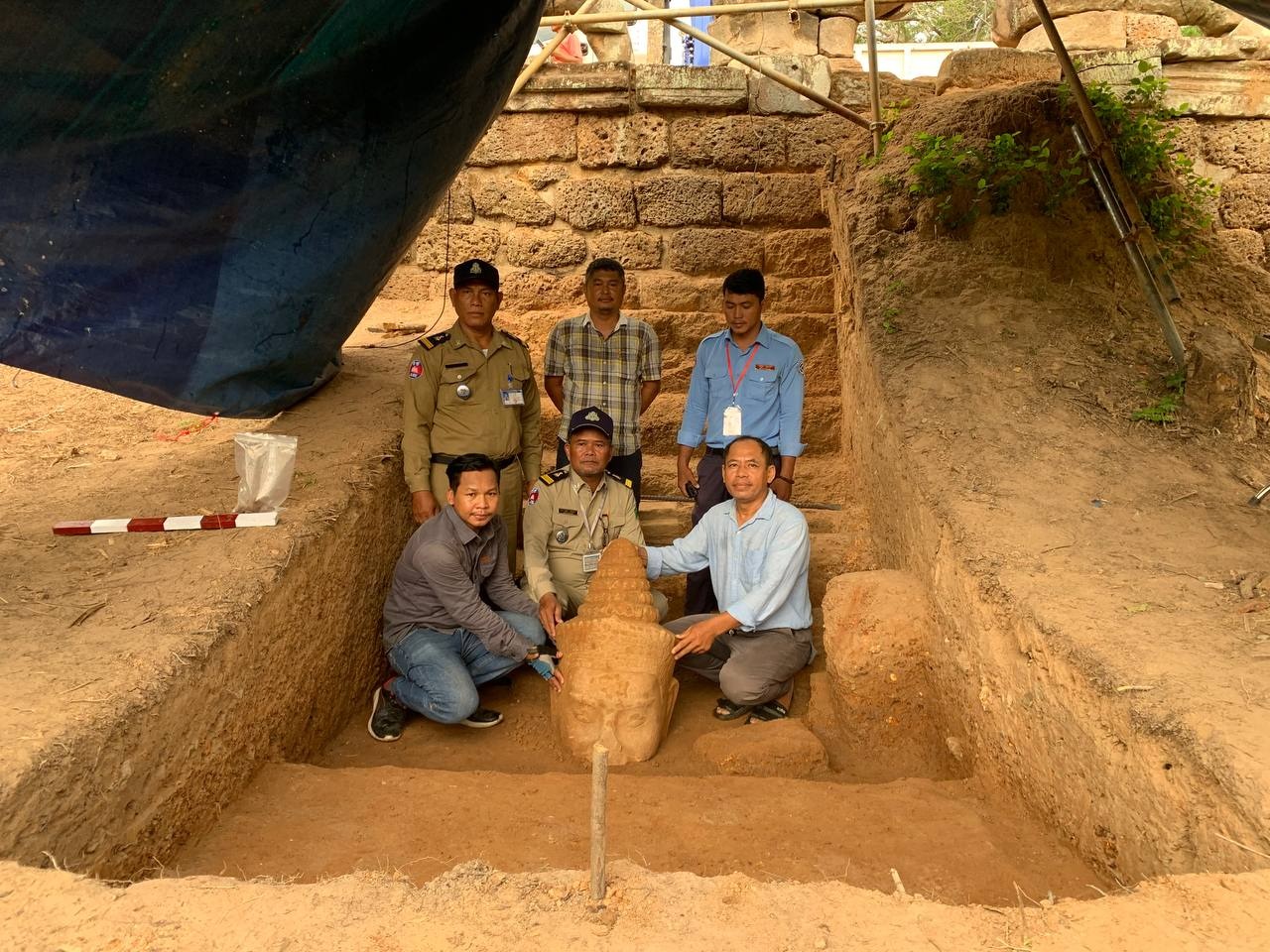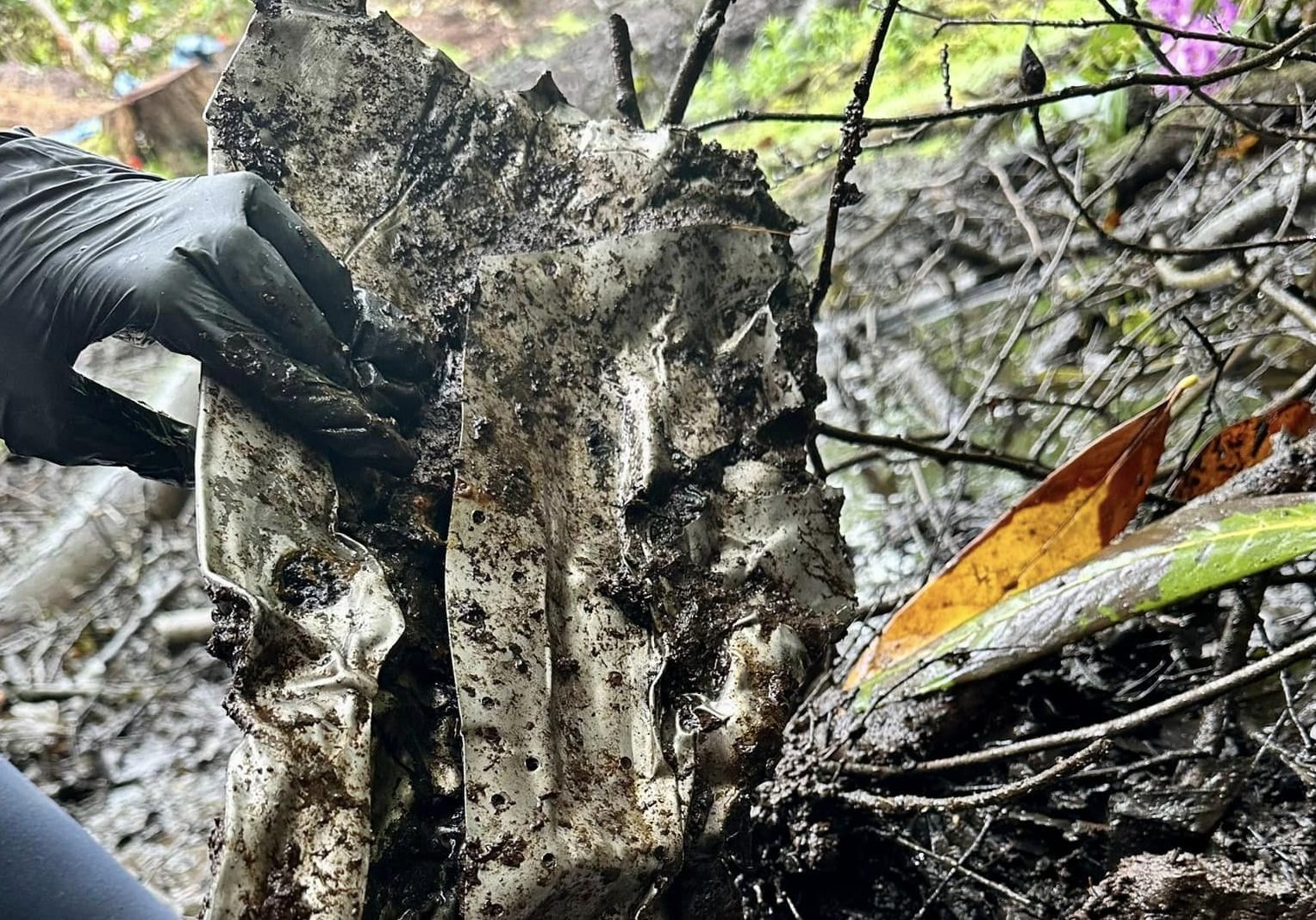Archaeology
Burial containing decorated longsword found in Halmstad

Archaeologists have uncovered a medieval longsword during excavations in the Lilla Torg centre of Halmstad, Sweden.
The longsword was discovered in a burial containing the skeletal remains of a man at the former site of a medieval convent known as the Church of Sankta Anna.
The church and monastery was built between 1494 and 1503 with the support of Christina of Saxony, then Queen of Denmark.
Following its closure by the city magistrate in 1531, it was repurposed to be used as a hospital and then an armoury. The surviving buildings were destroyed in 1619 when a fire destroyed much of the city.
The burial would have been located at the south nave when the church was operated by the Franciscan order, a Mendicant Order of Pontifical Right for men.
Previous excavations have identified 49 graves associated with the church, but the longsword is the first example found within the Lilla Torg centre and suggests that the individual was a person of noble birth.
Image Credit : Halland’s cultural History Museum
The longword, which measures 1.3 metres, was found on the individuals left side and is decorated with two inlaid crosses. Using X-ray imaging, the researchers have been able to visualise the decorations and determine that they were made using precious metals.
“It is an unusual find, and graves containing swords of this type have belonged to high-ranking persons of noble birth. A few similar swords have been found in medieval graves in Sweden before, including in the medieval Franciscan convent in Lund,” said Kulturmiljö Halland.
The sword has been removed for further examination and will be sent to Studio Västsvensk Konservering in Gothenburg for conservation.
Header Image Credit : Halland’s cultural History Museum
This content was originally published on www.heritagedaily.com – © 2023 – HeritageDaily
Archaeology
Archaeologists find missing head of Deva from the Victory Gate of Angkor Thom

Archaeologists from Cambodia’s national heritage authority (APSARA) have discovered the long-lost missing head of a Deva statue from the Victory Gate of Angkor Thom.
The Victory Gate is one of five gates to the city of Angkor Thom, the last capital of the Khmer Empire.
Angkor Thom was founded in present-day Cambodia during the late 12th century by King Jayavarman VII, the first king of the empire devoted to Buddhism.
His reign is considered a golden period in Khmer rule, introducing a welfare state for the Khmer people and a program of construction projects that included both public works and monuments.
Image Credit : APSARA
The Ayutthaya Kingdom sacked Angkor Thom, prompting the Khmers to relocate their capital southeast to Phnom Penh. The city continued to decline throughout the 16th century and was largely abandoned by the early 17th century.
According to the archaeologists, the head belongs to the 23rd Deva statue, one of 54 other deva statues who watched over visitors passing through the city gate.
Access to the gate was provided by a causeway crossing over a moat, flanked on both sides by 54 devas and 54 asuras (demons), symbolising the Hindu myth of the Churning of the Ocean of Milk.
According to a press statement by APSARA, the deva head is made from sandstone and has been found relatively intact, however, the head is missing the nose and upper lip.
A representative from APSARA said: “The discovery of the Deva statue head adds to the rich archaeological heritage of Angkor Thom and provides valuable insights into the history and craftsmanship of the ancient Khmer civilisation.”
Header Image Credit : APSARA
Sources : APSARA
This content was originally published on www.heritagedaily.com – © 2023 – HeritageDaily
Archaeology
Archaeologists search crash site of WWII B-17 for lost pilot

Archaeologists from Cotswold Archaeology are excavating the crash site of a WWII B-17 Flying Fortress in an English woodland.
The B-17 Flying Fortress is an American four-engine heavy bomber aircraft developed in the 1930s for the United States Army Air Corps (USAAC).
The bomber was mainly used in the European theatre for daylight strategic bombing, complimenting the RAF Bomber Command’s night bombers in attacking German industrial, military and civilian targets.
Cotswold Archaeology have been tasked by the Defense POW / MIA Accounting Agency to search the crash site for the remains of the pilot, who died when the B-17 crashed following a system failure in 1944.
Image Credit : Cotswold Archaeology
At the time, the plane was carrying a payload of 12,000lbs of Torpex, an explosive comprised of 42% RDX, 40% TNT, and 18% powdered aluminium. Torpex was mainly used for the Upkeep, Tallboy and Grand Slam bombs, as well as underwater munitions.
The pilot was declared MIA when the plane exploded into an inferno, however, using modern archaeological techniques, the researchers plan to systematically excavate and sieve the waterlogged crash site to recover plane ID numbers, personal effects, and any surviving human remains.
It is the hope of the excavation team members that they will be able to recover the pilot’s remains and return him to the United States for burial with full military honours.
The Defense POW/MIA Accounting Agency (DPAA) is an agency within the U.S. Department of Defense whose mission is to recover unaccounted Department of Defense personnel listed as prisoners of war (POW) or missing in action (MIA) from designated past conflicts.
Header Image Credit : Cotswold Archaeology
Sources : Cotswold Archaeology
This content was originally published on www.heritagedaily.com – © 2023 – HeritageDaily
-

 Ghosts2 years ago
Ghosts2 years agoZozo: The Ouija Board Demon
-

 Space2 years ago
Space2 years agoScientists claim to have found the answer what existed before the Universe
-

 Ghosts2 years ago
Ghosts2 years agoOld Coot of Mount Greylock
-
Archaeology1 year ago
New discoveries at Ekʼ Balam during conservation works
-

 General3 years ago
General3 years agoUC San Francisco engaging in horrifying experiments, organ harvesting of live babies in the name of “science”
